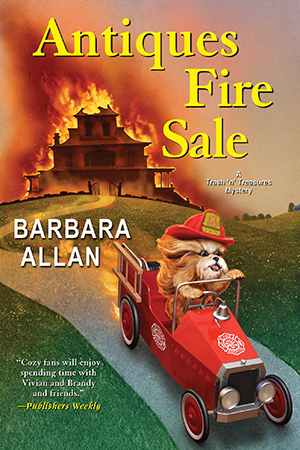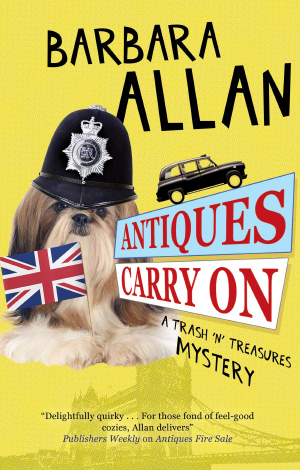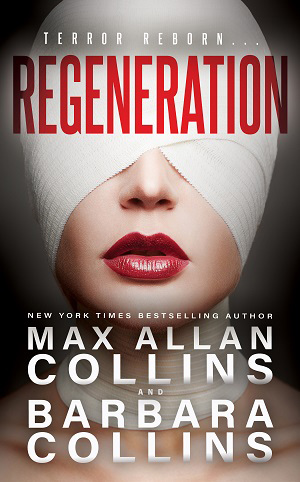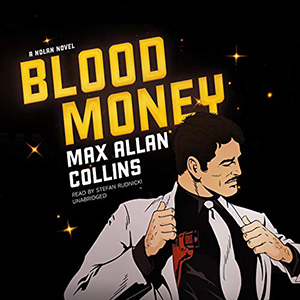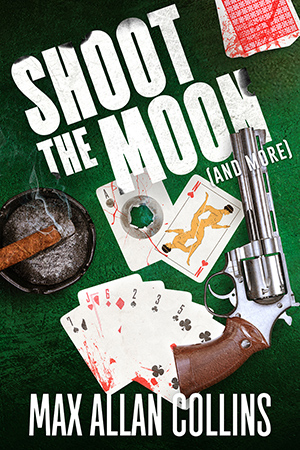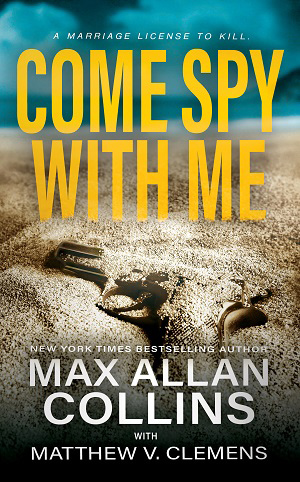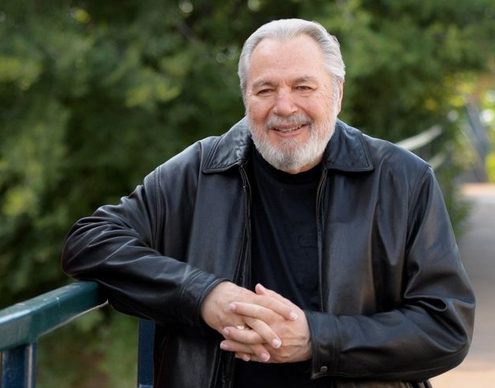We are offering ten copies of the paperback edition of Antiques Fire Sale, the hardcover edition of Shoot-out at Sugar Creek (Caleb York #6), and ten copies of the paperback edition of Hot Lead, Cold Justice (Caleb York #5) in exchange for reviews at Amazon and other reviewing sites/blogs. Amazon, of course, is key.
[All copies have been claimed. Thank you!]
If you read the book and dislike it, you are relieved of your obligation to review it (though of course you can).
If you drop by here regularly, you know that reviews are a matter of some interest on these updates, and even of controversy. But reviews are important because they are one of the only sales tools available to authors. In our case, Barb and I are of an age (even before the pandemic) where we are no longer doing book tours. For years we supported our books with trips to such exotic locales as California, Texas and New York. But a waning desire to travel, and the increasing ineffectiveness of signings, has made book tours less attractive to us. (Centuries and Sleuths in Chicago remains our only regular stop.)
For a long time we maintained regular attendance at Bouchercon, where we could do signings for readers from hither and yon, but health issues prevented attending several of those and of course Covid prevented Bouchercon entirely last year. And we have already decided to pass on New Orleans.
We also did San Diego Comic Con regularly, but that too fell victim to health issues and later the pandemic. I will be doing a one-man (well, two-man because Andrew Sumner of Titan is interviewing me) panel for the upcoming virtual SDCC.
Barb and I hope to do both Bouchercon and SDCC next year. Those health issues I mentioned are well in hand, but we had to skip Bouchercon because of my heart surgery and later lung surgery, and Barb’s pertussis, which had me landing in New Orleans and immediately getting called back to Iowa, never getting beyond the New Orleans airport.
How much good reviews do, I’m not sure. But they seem to be the only thing left to us. They are not infallible –Antiques Ravin’ got rave reviews in all four publishing industry trades (Publisher’s Weekly, Kirkus, Library Journal and Booklist), after which the series was promptly dropped by Kensington after thirteen successful entries.
The good news about the Antiques/Trash ‘n’ Treasures series, of course, is that we’re doing it for another publisher now – Severn, a British house, which pleases Vivian Borne no end (everything, she reports, is “tickety boo”).
Barbara Allan. Severn, $28.99
Allan’s fast, funny 15th Trash ‘ n’ Treasures mystery (after 2020’s Antiques Fire Sale) takes brassy Vivian Borne and her long-suffering daughter, Brandy, the owners of the Trash ‘n’ Treasures antiques shop in Serenity, Iowa, to London, where, at the request of fellow Serenity antiques dealer Skylar James, they drop by the Old Curiosity Shop, whose proprietor, Humphrey Westcott, has a reprint of Murder on the Orient Express for Skylar to give his Christie-loving wife. When Humphrey is found stabbed to death with a letter-opener bearing Brandy’s fingerprints, the women are interrogated by a representative of MI5. Fortunately, CCTV footage proves the Bornes’ innocence, and they are unceremoniously sent back to Iowa, where more suspicious deaths await them. The pair investigate in their own inimitable fashion, eventually discovering a link between the murders and the copy of Murder on the Orient Express. Vivian and Brandy share narrative duties, and their amusing commentary provides much of the book’s appeal (Vivian admits she has “just a teensy-weensy, hardly-worth-mentioning, hint of bi-polar disorder”). Allan (the pen name of Barbara and Max Allan Collins) consistently entertains.
We are obviously thrilled about that one. The book will be out in early July. And the industry trades, PW a star in that galaxy of four planets, fuel both library and bookstore sales.
Let me interrupt this discussion (if me yammering can be so described) and share a wonderful fan letter we received – an actual, physical, through-the-mail letter.
Thank you so much for continuing to add new novels to the Trash ‘n’ Treasures series. I just finished reading
Antiques Fire Sale. I am looking forward to the release of your newest addition, Antiques Carry On! The characters seem almost like friends to me, since I have followed their adventures and shenanigans through all of your novels.My sister Jessica Butler and I are huge fans! We share laughs as we discuss the stories. Please keep writing because your works bring joy and delight into our world! Thank you for sharing your talents with us.
Best wishes,
Suzanne Schumann

To say this kind of response makes our day (and not in a Dirty Harry sense) is an understatement. A reader response like this makes the struggle worth it, and believe me, writing – and publishing – is a struggle. Hoping it doesn’t sound patronizing, I am so proud of Barb for developing into a wonderful writer and collaborator – she is the one who makes these books really, really special.
On another front, it’s been difficult to get reviews for the John Sand series. This may be because Wolfpack – despite getting huge attention in the trades for its burgeoning success and innovative ways – places an emphasis on e-book publication, which seems (to me at least) to make reviews from the trades more difficult to get. How difficult? Neither Come Spy With Me nor Live Fast, Spy Hard has received a single review in any one of them.
Which is why the Amazon reader reviews are so crucial, as are reviews on Internet sites and in the handful of surviving newsstand mystery magazines (Ellery Queen, Strand, Mystery Scene). Thankfully we have had support from two key sites, Bookgasm and Pulp Fiction Reviews, and the Rap Sheet may be doing reviews soon. With your forbearance, I will share the Bookgasm review of Live Fast, Spy Hard with you right now:
John Sand is living out his role as a high-ranking executive of the oil company owned by Stacey’s father. But all the while he keeps a secret from his wife. He has been tracking Jake Lonestarr, the traitorous business partner of Stacey’s father. Lonestarr is assumed dead, but Sand still feels he is still at large.
Then Stacey mysteriously disappears. Lonestarr is the chief suspect in Sand’s search for his wife. But there is reason to believe that Las Vegas gangster Anthony Morello might also be responsible. Or is Stacey actually hiding from someone that Sand does not know of?
Sand’s search takes him Berlin to Mexico, and finally to the jungles of Curacao. But can he find his missing wife before an army of assassins catches up with him?
The authors present the novel in a third-person perspective, keeping the focus mainly with Sand. There are, however, occasional shifts that allow us to know the thoughts and emotions of Stacey and those intent on ending Sand’s life.
And while the novel’s tone and structure continues to follow the traditions of Ian Fleming’s classic James Bond stories, the references to Bond are noticeably less than the first Sand novel (Come Spy With Me), but Collins and Clemens continue their satirical wordplay with both the title and chapter headings.
Also reduced are the real-life figures Sand encounters. Here, they are mainly confined to President John F. Kennedy – who tries to enlist Sand into a new international spy agency — and, briefly, movie legend John Wayne.
Familiarity with the first Sand novel is not essential. The authors even devote the opening chapter to how Sand and Stacey first met. But reading this latest Sand adventure is greatly enhanced if you already met both characters.
Is this the last encounter of John Sand and his beautiful, resourceful wife? That, it seems, is up to Collins and Clemens. For the time being, we have these two thoroughly entertaining and exciting thrillers to enjoy. —Alan Cranis
Well, Live Fast, Spy Hard will not be the last John Sand book, because just last night Matt and I shipped To Live and Spy in Berlin to Wolfpack editor Paul Bishop.
We love doing these books and the only way we will stop is if sales don’t encourage us to continue. Reader response has been excellent – lots of nice things have been (and are being) said on Facebook about John Sand. But we need you readers out there who like Quarry, Mike Hammer, Nolan, and Nate Heller (even the Antiques fans) to give Sand, John Sand, a try.
Ron Fortier at Pulp Fiction Reviews also likes Live Fast, Spy Hard. His lovely review is right here.
Finally, here’s another great Shoot-out at Sugar Creek review.
M.A.C.
